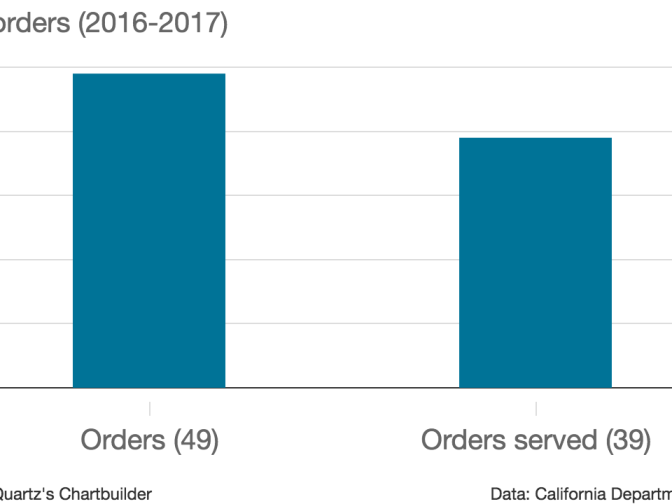Truth matters. Community matters. Your support makes both possible. LAist is one of the few places where news remains independent and free from political and corporate influence. Stand up for truth and for LAist. Make your year-end tax-deductible gift now.
This archival content was originally written for and published on KPCC.org. Keep in mind that links and images may no longer work — and references may be outdated.
Why a California gun seizure law could be a model for national legislation
A California law that is a model for pending national legislation resulted in 190 court orders in 2016-17 for police to temporarily take away weapons from people deemed a danger to themselves or others.
The law, which took effect in 2016, creates a process for law enforcement, an immediate family member or someone in the home to ask a judge to issue a Gun Violence Restraining Order. The petitioner must also demonstrate that alternative steps have been tried and found to be ineffective or inadequate.
When a judge issues an order, it lasts for a 21-day cooling-off period. After that, the judge must hold another hearing to determine whether to extend the order for up to one year. The target of the order is given an opportunity to present a counter-argument.
In the wake of reports that authorities missed numerous "red flags" concerning the Florida mass shooter, Florida Senator Marco Rubio introduced a bill that would establish a similar process nationwide.
The California law's author, State Sen. Nancy Skinner (D-Berkeley), said she's proud of what it has accomplished so far.
"We can speculate that some number of deaths were prevented as a result," she said.
Most of the 190 restraining orders issued in 2016 and 2017 didn't last beyond the initial 21-day period, according to statistics provided by the California Department of Justice. Only 17 were extended to a full year.
"The three weeks may be enough to get the person the help they need to avoid that suicide," said Skinner.
Throughout the state, the vast majority of orders came from law enforcement. In L.A., Orange, Riverside, San Bernardino and Ventura counties, there were a total of 49 three-week orders, but only five were initiated in the courts by family members. Skinner pointed out that in some cases, police may have sought a court order after being alerted by an individual's family.
The state data also shows that law enforcement failed to serve 31 of the restraining orders. Officials at the California Department of Justice did not respond immediately to requests for clarification on those cases.
The total number of 21-day restraining orders issued in the first two years of the law in Los Angeles, Orange, Riverside, San Bernardino and Ventura counties:

Skinner introduced the legislation after the 2014 mass shooting in Isla Vista.
In both that incident and in Parkland, Florida, "if [law enforcement] had had this tool, they could have gotten the guns out of [the shooters'] hands," she said.
"That gives them a legal right to be able to do more than a welfare check on someone who they have evidence of credible threats of violence," said Skinner.
It's also important to give family members the power to act, she said.
"Loved-ones are often the first to notice if there’s a problem or if someone is threatening violence to ourselves or others," Skinner said.
The state has a website with information on how to seek a firearms restraining order.
The sources of requests for 21-day restraining orders in the first two years of the law in Los Angeles, Orange, Riverside, San Bernardino and Ventura counties combined:











